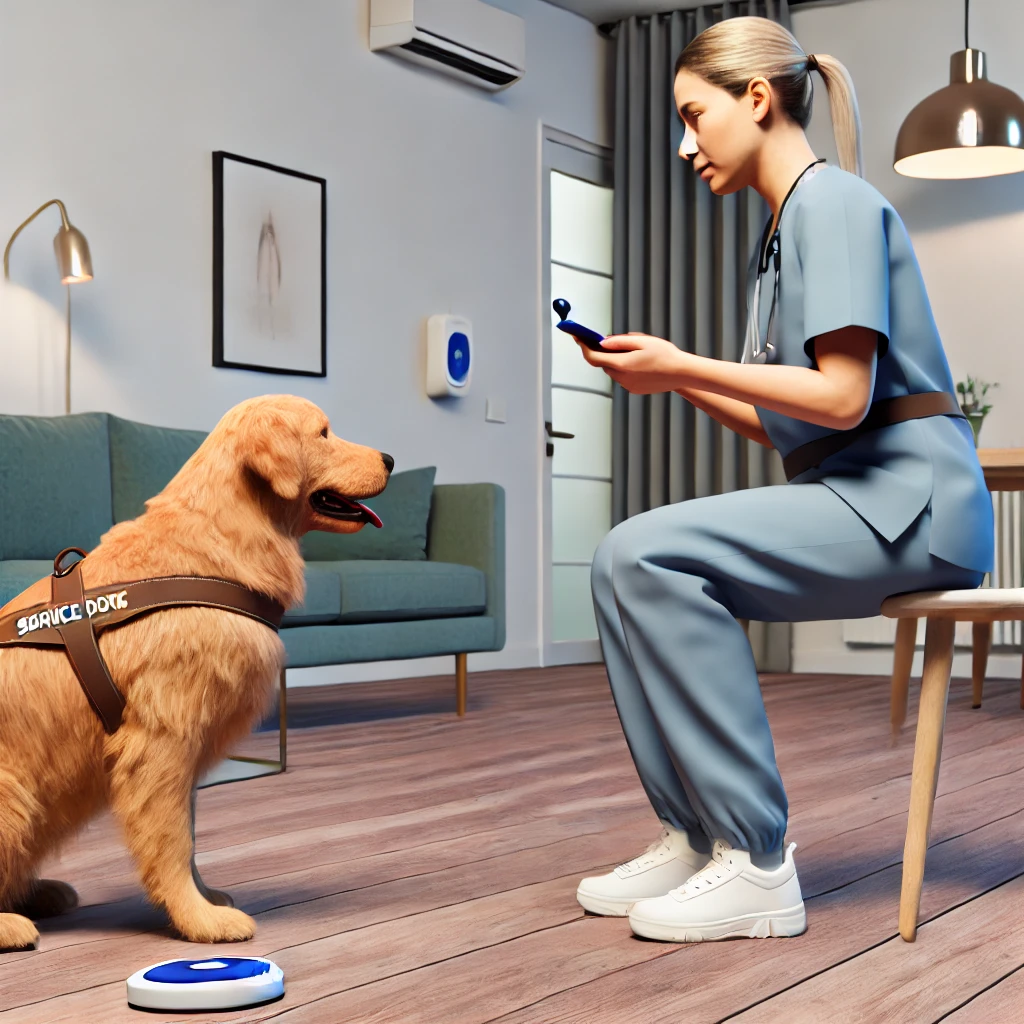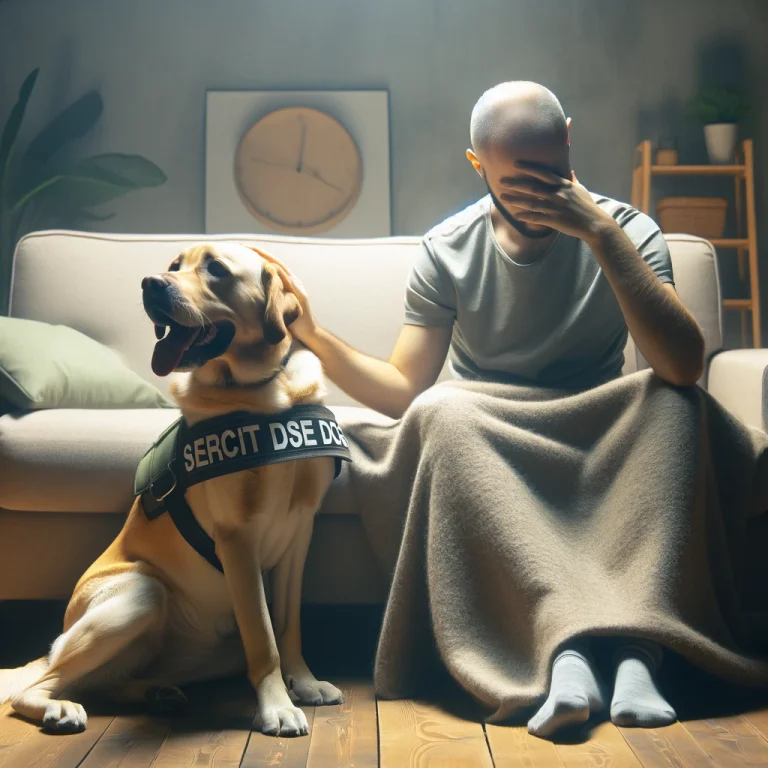Service dogs can provide invaluable support for individuals with specific medical needs. Training service dogs for medical alerts, medical assistance, and specialized tasks involves a combination of dedication, patience, and expert techniques. This comprehensive guide will walk you through the essential steps and techniques for medical assistance dog training, ensuring your dog is well-prepared to assist you effectively.
Understanding the Role of Medical Assistance Dogs
Medical assistance dogs are trained to perform specific tasks that help their handlers manage medical conditions. These tasks can include alerting to changes in blood sugar levels, detecting seizures, or providing physical support during a medical crisis. Proper training is crucial to ensure these dogs can perform their duties reliably and effectively.
Benefits of Training Your Service Dog
Promise to the Reader: By following this guide, you will learn how to train your service dog for specific medical needs, enhancing your independence and quality of life. A well-trained service dog can provide peace of mind and essential support, making daily activities safer and more manageable.

Getting Started with Training Service Dogs for Medical Alerts
Training a service dog for medical alerts involves teaching the dog to recognize specific signals or changes in their handler’s body and respond appropriately. This training is critical for individuals with conditions such as diabetes, epilepsy, or severe allergies.
Step 1: Selecting the Right Dog
Not all dogs are suitable for medical assistance work. When choosing a service dog, look for traits such as intelligence, calmness, and a strong desire to work. Breeds commonly used for medical assistance include Labrador Retrievers, Golden Retrievers, and Poodles.
Step 2: Basic Obedience Training
Before moving on to specialized training, ensure your dog has a solid foundation in basic obedience. Commands such as sit, stay, come, and heel are essential for maintaining control and ensuring safety.
Specialized Service Dog Training Techniques
Once your dog has mastered basic obedience, you can begin specialized training tailored to your specific medical needs. Here are some techniques to consider:
Training for Diabetic Alert
- Scent Training: Dogs can be trained to detect changes in blood sugar levels by scent. Collect samples of your saliva or sweat when your blood sugar is high and low. Use these samples to teach your dog to recognize the scent and alert you by pawing or nudging you.
- Positive Reinforcement: Reward your dog with treats and praise when they correctly identify the scent and alert you. Consistency is key to reinforcing this behavior.
Training for Seizure Response
- Recognizing Seizure Indicators: Some dogs can be trained to sense subtle changes in their handler’s behavior before a seizure occurs. Work with a professional trainer to identify these indicators.
- Response Training: Teach your dog specific tasks such as fetching medication, pressing a panic button, or providing physical support during a seizure. Use positive reinforcement to encourage these behaviors.

Medical Assistance Dog Training
Medical assistance dogs may be required to perform a variety of tasks, depending on their handler’s needs. Here are some common tasks and how to train your dog to perform them:
Mobility Assistance
- Bracing: Teach your dog to stand still and provide support while you use them to brace yourself when standing up or sitting down.
- Retrieving Objects: Train your dog to pick up and bring objects such as medication, water bottles, or a phone. Use commands like “fetch” and reward them for successful retrievals.
Allergy Alert
- Scent Detection: Similar to diabetic alert training, teach your dog to detect allergens by scent. Use samples of the allergen and reward your dog for alerting you to their presence.
- Alerting: Train your dog to alert you by pawing, barking, or another distinct behavior when they detect the allergen.
Ensuring Success with Training
Training a service dog for specific medical needs requires time, patience, and dedication. Here are some tips to ensure successful training:
Consistency
Consistent training sessions help reinforce learned behaviors. Aim for short, frequent training sessions rather than long, infrequent ones.
Positive Reinforcement
Always use positive reinforcement techniques. Reward your dog with treats, praise, and affection when they perform tasks correctly. Avoid punishment, as it can create fear and hinder training progress.
Professional Guidance
Consider working with a professional service dog trainer who specializes in medical assistance dog training. They can provide valuable insights and techniques tailored to your needs.
Future Care for Service Dogs
Investing in pet insurance is crucial for maintaining your service dog’s health and effectiveness. Pet insurance provides financial protection for unexpected medical expenses, ensuring your dog receives the best care without causing financial strain. Look for policies that cover routine care, emergencies, and chronic conditions.
High-Quality Service Dog Products
High-quality service dog products, such as vests, harnesses, and identification tags, are essential for your dog’s comfort and effectiveness. These products ensure your dog is easily identifiable and well-equipped for their tasks. ServicePupSolutions.com offers a range of products to support your service dog’s training and daily needs.
Self-Training Options
For those interested in training their service dog themselves, resources like ServiceDogOwners.com offer valuable guidance. Self-training allows you to build a strong bond with your dog while tailoring their training to your specific needs.
Benefits of Self-Training
- Personalized Training: Tailor the training to your specific needs and preferences.
- Stronger Bond: Building a closer relationship with your dog through direct training.
- Cost-Effective: Reducing the costs associated with professional training services.
- Flexibility: Training at your own pace and schedule.
Conclusion
Training your service dog for specific medical needs can enhance your independence and improve your quality of life. By following the specialized training techniques outlined in this guide, you can ensure your service dog is well-prepared to assist you effectively. Remember, consistency, positive reinforcement, and professional guidance are key to successful training. For more resources and high-quality service dog products, visit ServicePupSolutions.com. And for those interested in self-training options, explore the comprehensive guides available at ServiceDogOwners.com.
By investing in proper training and care, you can ensure that your service dog is a reliable and valuable companion for years to come.
Searching for a way to boost your income while keeping your service dog by your side? Learn how Digital Marketing and Affiliate Marketing can launch your Side Hustle or new career and increase your earnings alongside your loyal companion. Click Here to find out more and start your journey today!





